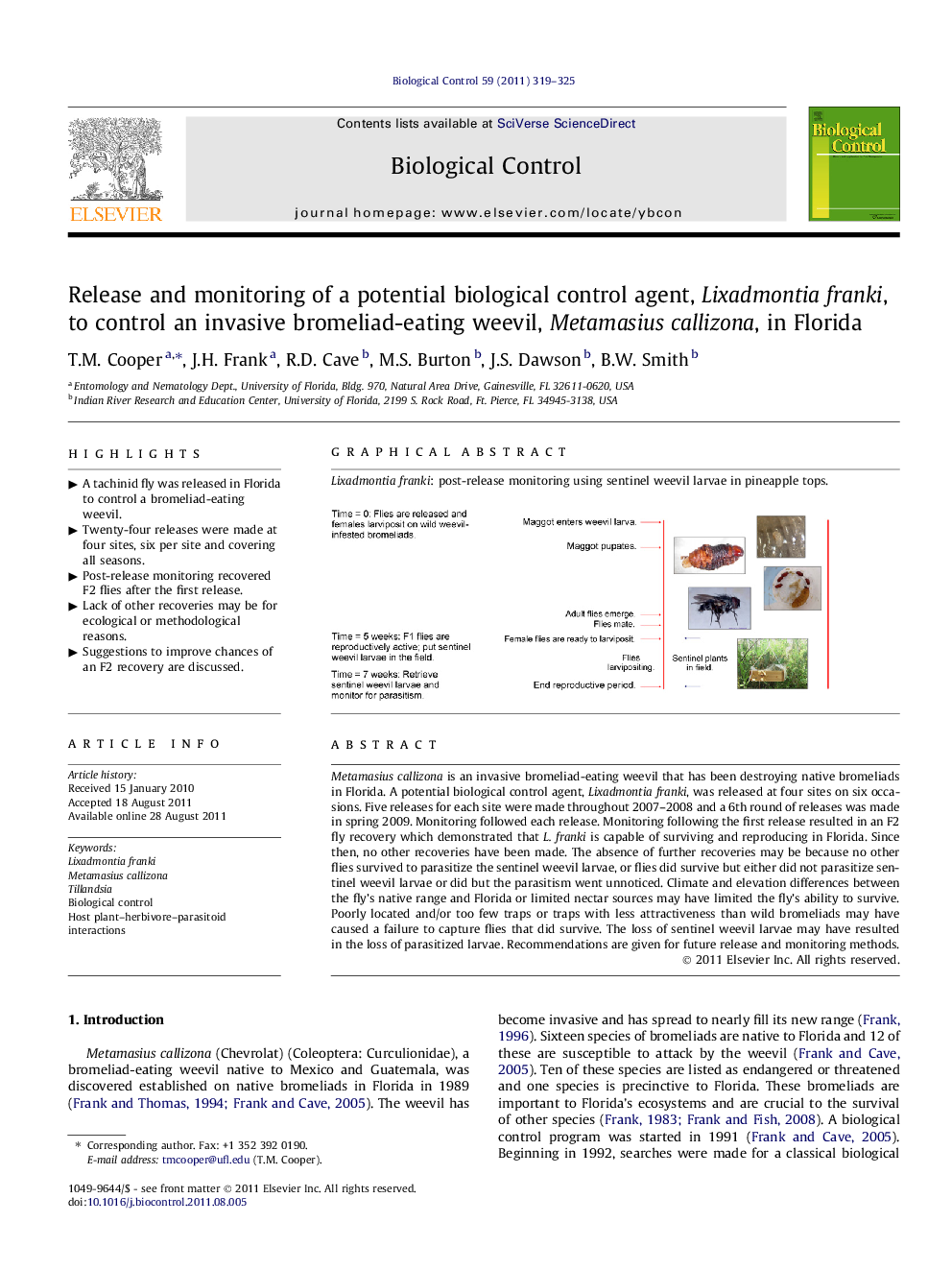| کد مقاله | کد نشریه | سال انتشار | مقاله انگلیسی | نسخه تمام متن |
|---|---|---|---|---|
| 4504149 | 1321073 | 2011 | 7 صفحه PDF | دانلود رایگان |

Metamasius callizona is an invasive bromeliad-eating weevil that has been destroying native bromeliads in Florida. A potential biological control agent, Lixadmontia franki, was released at four sites on six occasions. Five releases for each site were made throughout 2007–2008 and a 6th round of releases was made in spring 2009. Monitoring followed each release. Monitoring following the first release resulted in an F2 fly recovery which demonstrated that L. franki is capable of surviving and reproducing in Florida. Since then, no other recoveries have been made. The absence of further recoveries may be because no other flies survived to parasitize the sentinel weevil larvae, or flies did survive but either did not parasitize sentinel weevil larvae or did but the parasitism went unnoticed. Climate and elevation differences between the fly’s native range and Florida or limited nectar sources may have limited the fly’s ability to survive. Poorly located and/or too few traps or traps with less attractiveness than wild bromeliads may have caused a failure to capture flies that did survive. The loss of sentinel weevil larvae may have resulted in the loss of parasitized larvae. Recommendations are given for future release and monitoring methods.
Lixadmontia franki: post-release monitoring using sentinel weevil larvae in pineapple tops.Figure optionsDownload as PowerPoint slideHighlights
► A tachinid fly was released in Florida to control a bromeliad-eating weevil.
► Twenty-four releases were made at four sites, six per site and covering all seasons.
► Post-release monitoring recovered F2 flies after the first release.
► Lack of other recoveries may be for ecological or methodological reasons.
► Suggestions to improve chances of an F2 recovery are discussed.
Journal: Biological Control - Volume 59, Issue 3, December 2011, Pages 319–325